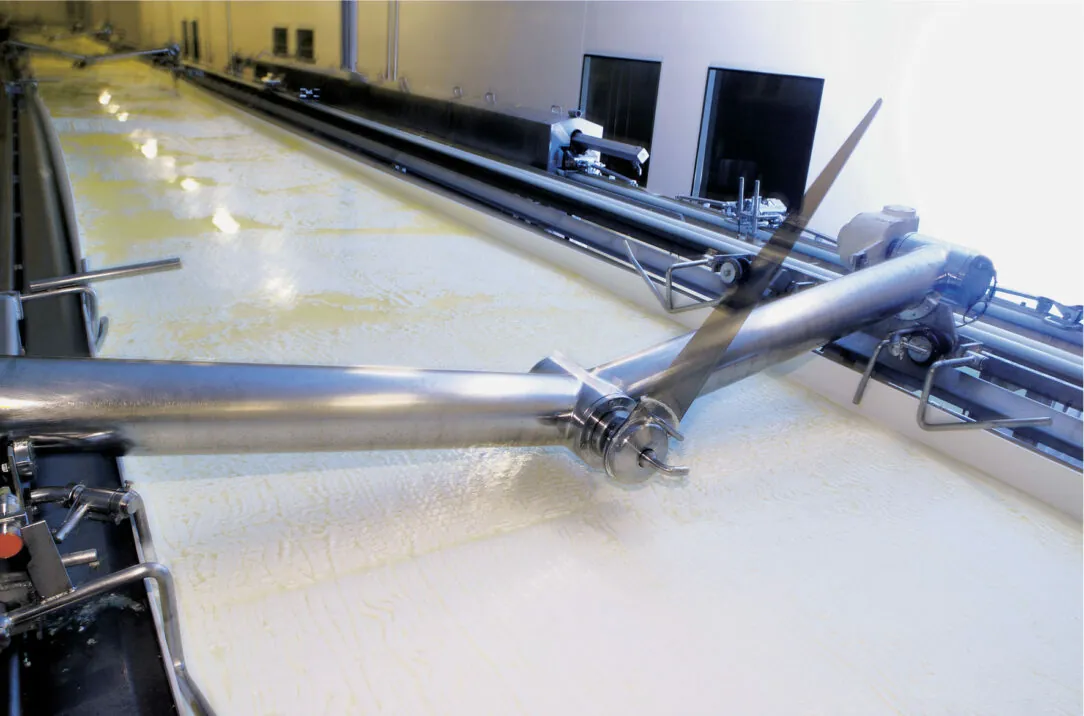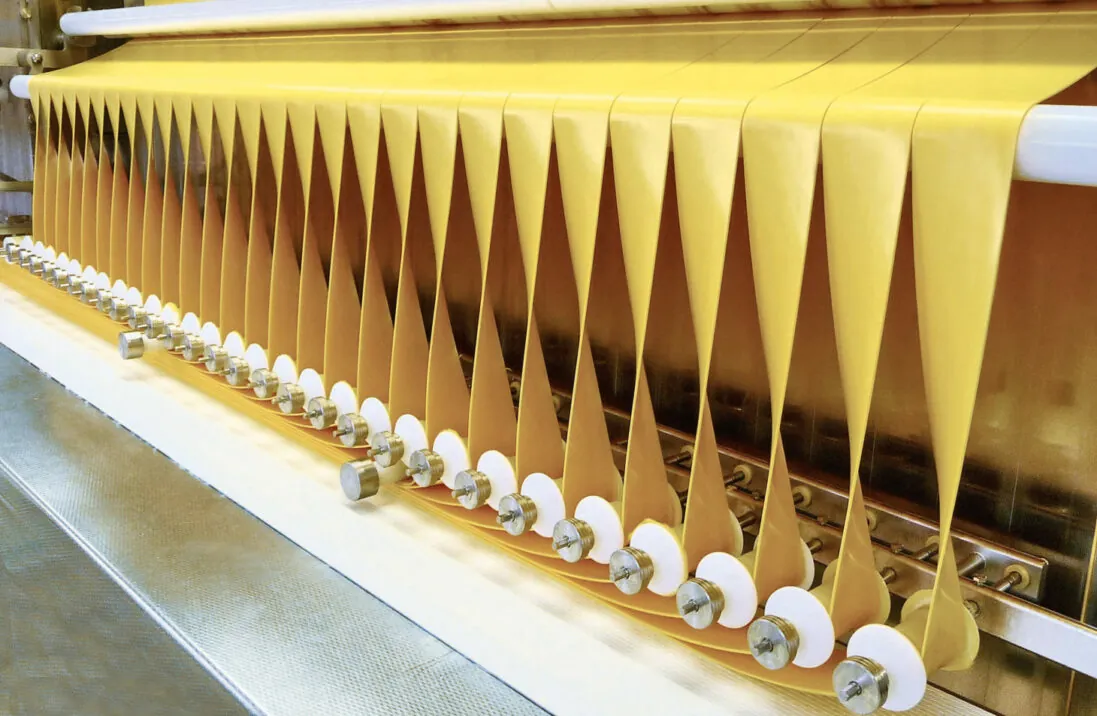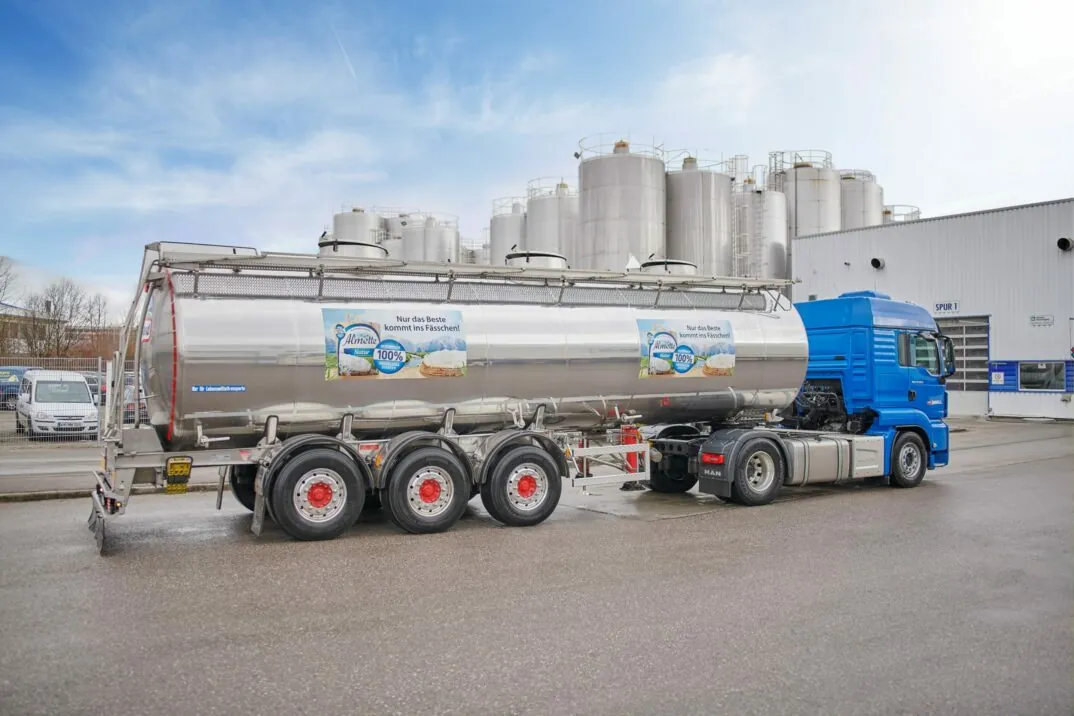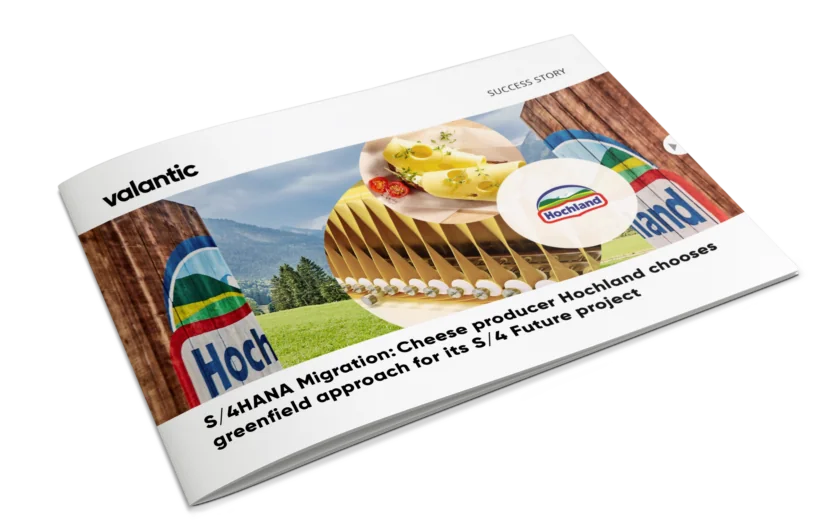Highlight

Successful together – our valantic Team.
Meet the people who bring passion and accountability to driving success at valantic.
Get to know usProject S/4 Future
With its popular brands, including Hochland, Almette, Grünländer, Patros, Fetaxa, Gervais, Valbrie, and Valbon, the Hochland Group is one of the largest private cheese producers in Europe. More than 5,500 people work for Hochland around the world, generating annual sales of almost EUR 1.6 billion.

This family-run company, now in the fourth generation, has been producing cheese products for 90 years and places great importance on quality, tradition, and culture. The company headquarters is in Heimenkirch in the Allgäu region. Over the last few decades, Hochland has grown into an international company, with branches in France, Spain, Poland, Romania, Russia, and the USA. For many years, a machine and plant engineering division that makes machines for cheese production and packaging has also been part of the company, with locations in Germany, Australia, and the USA.
Challenge
Conversion of an old R/3 system to a new SAP S/4HANA system.
Consulting goal
Cheese producer Hochland migrates to SAP S/4HANA and chooses a greenfield approach, selectively brownfield, combined with agile project methodology.
Customer value add and solution
SAP S/4HANA becomes the foundation for digital transformation at Hochland.

The Challenge: 20 years of SAP R/3
Hochland has been using R/3 successfully for over 20 years. The company’s IT department has repeatedly adapted the functionality of R/3 to its own needs with in-house developments. This has created a certain amount of uncontrolled growth, which hinders the introduction of innovative, networked technologies.
With the migration to S/4HANA, Hochland wants to return to the standard and has therefore opted for a greenfield approach. Greenfield puts processes to the test and builds the SAP system from scratch. The aim is to create a foundation for digital transformation in order to be able to confront all future challenges. For Hochland, the S/4HANA migration is an essential component of the S/4 Future project, which includes topics such as integrated business planning (IBP), human capital management (HCM), manufacturing execution systems (MES), Big Data, and, above all, the training and further development of the company’s own employees.

Solutions & results in detail
Conversion of an old R/3 system to a new SAP S/4HANA system:

Hochland masters giant S/4HANA migration project
Greenfield as a migration methodology from R/3 to SAP S/4HANA was initially under discussion at Hochland. In the first discovery workshop about S/4HANA in 2018, the brownfield supporters were still clearly in the majority. But it quickly became clear that such a huge project could not be done without a strong partner. In February 2019, Hochland was therefore actively seeking a digtalization partner. Jürgen Brunner, head of the Hochland Group’s IT division, justifies the selection of valantic based not only on valantic’s expertise and industry knowledge. “The chemistry and the gut feeling also have to be right, because for such a large project, we work very closely with the consultants for a few years,” explains Brunner.
After the design phase in February 2020, the time had come: The decision for greenfield was quite clear at an international kick-off event with 120 participants, even though some voices still indicated great respect for the enormous complexity of the migration project. “In the end, however, the entire Hochland team, including the board of directors, was and will continue to be very enthusiastic,” recalls Brunner about the initial phase.
In June 2020, the agile project methodology “continuous discovery & delivery” (CD&D) was selected. For the “waterfall” pragmatists in IT development, this was completely new terrain. However, valantic’s consultants also advocated for CD&D in the specific version used at Hochland.

Hochland and valantic rely on the agile scrum methodology CD&D
Here’s an overview of how CD&D works: The discovery team specifies the integration and subprocesses in one-month sprints and, after an approval process, transfers them to the delivery team, which implements the specifications and sends the results back to discovery. The advantages of CD&D are faster implementation and more touchpoints. “By closely linking discovery and delivery, we avoid friction losses and we manage to keep the attention of all those involved in the project focused,” explains Daniel Wächter, Member of the Management Board at valantic ERP Consulting, about the methodology’s advantages.
Hochland and valantic’s SAP consultants implement the S/4HANA migration project methodically, but also flexibly and pragmatically. Brownfield is used at points where this seems sensible.
For example, Hochland had already reworked certain topics such as recipe development in R/3 and so process models and functions were checked for usability. “We had already set up these sub-areas and then migrated them to the S/4 world as brown spots. So our greenfield approach also includes some bluefield and brownfield points. We are talking here about our “coloring game” in the project,” jokes Brunner.

The continuous discovery and delivery (CD&D or AIF) project methodology integrates the planning and implementation of subprocesses in 1-month sprints and thus quickly produces very good results. (Source: Presentation by Jürgen Brunner at valantic Customer Focus Day SAP)
Hochland is not only one of the largest private cheese producers in Europe, it has also been making machines for cheese production and processing for decades with a subsidiary company in Germany and for a few years also in Australia. This was another reason to set up SAP largely as if from scratch and to subject all processes to a review. “We not only have to map cheese processes, we also have a classic machine and plant manufacturer on board,” explains Brunner. Another benefit: With the migration, Hochland is also introducing SAP’s more user-friendly Fiori GUIs, which are crucial for user acceptance.

New mindset at Hochland: Fail fast – succeed faster
S/4HANA provides a solid, reliable foundation for Hochland’s digital transformation and the challenges of the coming years. Migration to SAP’s new platform, however, is not only a technological project, but also a cultural one, which requires a new mindset for all employees. It means saying goodbye to silo thinking and getting involved in thinking in terms of cross-departmental end-to-end processes. Not everyone can switch to a new digital mindset so easily. Trainings, other measures, and new matrix structures are indispensable for this. And errors also have to be tolerated: Brunner has made “fail cheerfully” the motto for his employees. For each of the twelve sub-projects, Hochland has defined both a specialist area-related global process owner and a local process owner responsible for each local company. Together with the IT specialists, these teams are responsible for formulating global templates with all the necessary processes.
The migration project from the existing R/3 system to the new S/4HANA in all local companies should be completed in 2024. IT Division Manager Brunner draws a positive conclusion: “I’m very proud that we at Hochland have been able to work with valantic to blaze this courageous trail. We are still in the process of making some adjustments, but even last-minute changes to the method are part of the agile process model.” Brunner regards S/4HANA as an essential component of Hochland’s entrepreneurial vision, which is based on five pillars : Growth, sustainability, increasing efficiency, digitalization, and attractiveness for employees. He especially emphasizes the last, fifth pillar: It’s critical, with the support of the executive board, to “pick up” the employees, train them, and lead them toward the new digital technologies.

Download Case Study Hochland
Download the complete case study and find out how Hochland is implementing the S/4HANA migration project flexibly and pragmatically by using a greenfield approach.